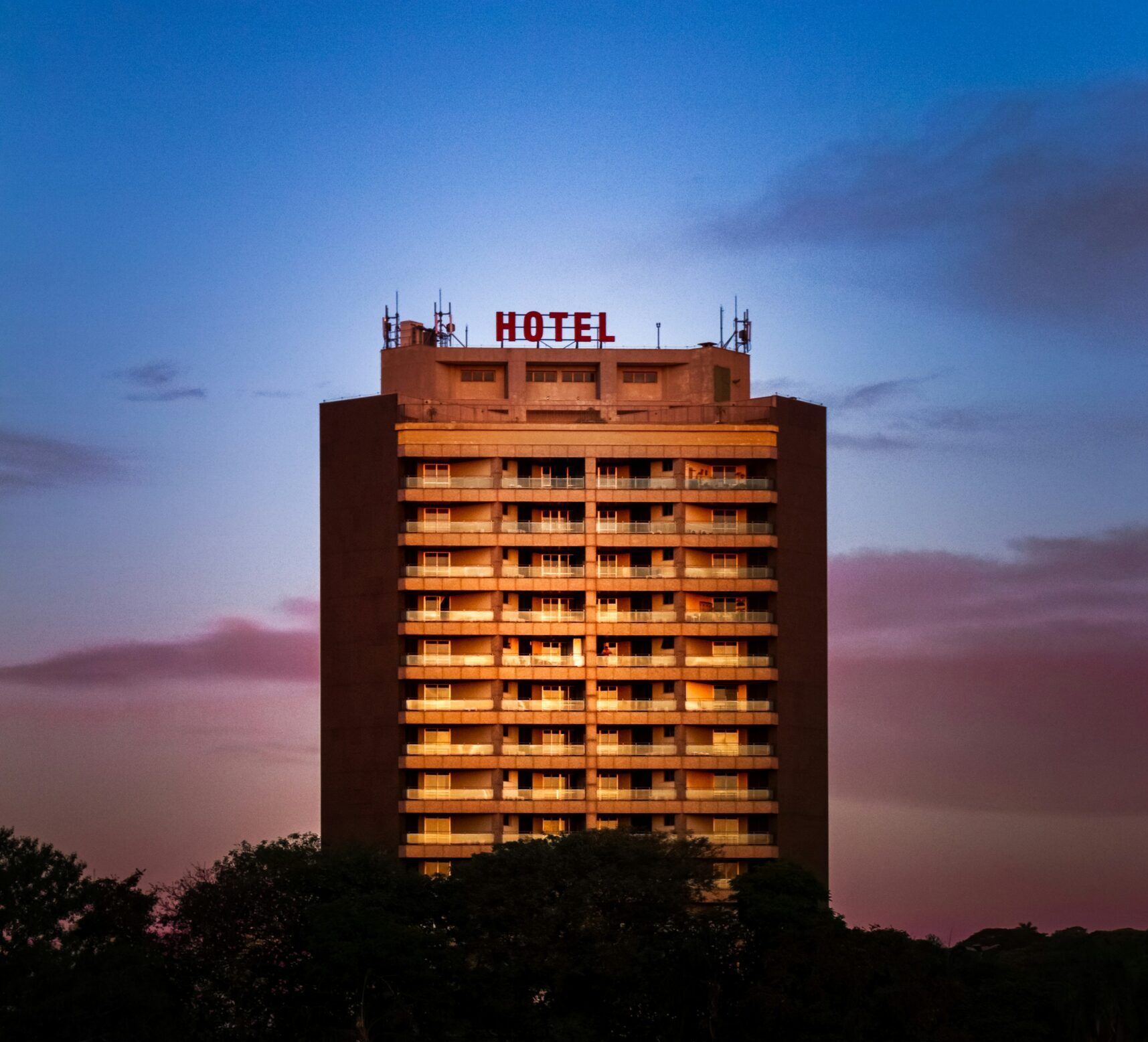
Hospitality Insights
Realigning hotel markets: the untapped fiscal opportunity for US cities
September 2025
The hidden tax engine in plain sight
Cities across America are searching for ways to expand their tax base without overburdening residents. Raising property taxes is politically toxic. Sales taxes rise and fall with the business cycle. Grants and one-off windfalls disappear as quickly as they arrive.
Yet one of the most dependable revenue engines sits in plain view: hotels.
Every occupied hotel room-night produces a cascade of benefits. The bed tax alone can contribute millions directly into municipal coffers. Visitors spend at restaurants, shops, and attractions, amplifying sales tax revenue. Hotel employees earn wages, pay taxes, and circulate money locally. And the capital investment in hotels bolsters property values over time.
The problem isn’t that hotels aren’t producing. It’s that in many cities, they are under-producing relative to potential. The reason? Misalignment. Not a lack of demand, not a shortage of rooms, but a misfit between the kind of hotels a city has and the kind of demand it should be capturing.
Misalignment Explained
Misalignment in the hotel sector takes several forms:
- Class mismatch: A glut of limited-service and midscale hotels where upper-upscale or upscale properties would yield higher occupancy, higher rates, and higher taxes.
- Geographic scatter: Rooms strung along interstates or suburban nodes while downtowns, convention centers, or entertainment districts lack sufficient density.
- Brand gaps: Absence of recognizable brands in segments that meeting planners or corporate travel managers rely on.
- Sales fragmentation: Hotels pursuing demand individually instead of coordinating through CVBs or economic development offices.
When these patterns persist, a city can look busy but still fall short of its fiscal potential. Hotels aren’t broken; they’re mis-calibrated.
MarketCompass: A Bellwether of Alignment
The MarketCompass rankings from Horwath HTL provide a powerful way to spot mismatches. By ranking the 110 largest U.S. hotel markets across overall performance and by class—Luxury, Upper Upscale, Upscale, Upper Midscale, Midscale, and Economy—MarketCompass isn’t an absolute verdict but a bellwether.
If a city with strong airlift, tourism assets, and convention space consistently scores near the bottom in Upper Upscale, something is wrong. That class is the fiscal workhorse of the industry: branded hotels with the space and services to capture conventions, corporate events, and multi-day group travel. When those assets underperform, the issue isn’t demand but structure, clustering, or coordination.
Illustrative Underperformers
- Portland, OR – Overall rank: 85th; Upper Upscale: 91st. A city with a modern convention center, strong cultural cachet, and West Coast airlift should not trail peers in the very segment that drives convention demand.
- Oakland, CA – Overall: 92nd; Upper Upscale: 92nd. With San Francisco spillover potential and direct airport access, Oakland’s poor showing reflects branding and clustering problems, not a lack of travelers.
- Newark, NJ – Overall: 79th; Upper Upscale: 85th. As home to one of America’s busiest airports, Newark should be competitive in high-rated classes. Its underperformance signals product and perception issues.
- Baltimore, MD – Overall: 89th; Luxury: 110th. With a large convention center and waterfront appeal, Baltimore should post stronger high-end performance.
- Memphis, TN – Upper Upscale: 108th. A global music capital with growing tourism hasn’t converted its assets into convention-class hotel strength.
For some cities, lagging in Luxury or Economy may not matter. But when Upper Upscale underperforms despite the presence of convention centers and airlift, it’s a fiscal red flag.
Why Upper Upscale Matters—But Isn’t Always the Answer
Upper Upscale is often the “star chest” for convention demand. Marriott, Hyatt, Hilton, and similar brands dominate this class with properties designed for meetings, breakouts, and group dining. They anchor citywide conventions and generate the largest tax yields.
But not every city needs—or can—compete in that class. Some destinations thrive in Upscale, serving steady midweek business travel, university-driven demand, or smaller conferences. Problems arise when a city tries to fight in the wrong weight class: subsidizing Upper Upscale projects that don’t fit, while ignoring the Upscale segment that matches its natural demand.
The smarter strategy is to identify which class is the natural anchor for your market, then align supply, branding, and sales strategy accordingly.
Lifestyle Hotels: The Color of a City
Overlaying this is the rise of lifestyle hotels—design-forward, locally inspired properties that rarely have ballrooms but often become the preferred spillover inventory for citywide conventions.
Why? Because after the sessions end, attendees want to experience the city itself. Lifestyle hotels offer authenticity, local design, and a lively F&B scene. Cities with strong benches of lifestyle hotels can weave them into convention bids, turning events into citywide showcases of local identity.
This doesn’t replace the need for convention-class anchors, but it strengthens bids and enhances visitor satisfaction. Incentivizing lifestyle hotels to participate in citywide room blocks broadens appeal and lengthens stays, multiplying tax revenue.
Mini Case: Colorado Springs
Colorado Springs illustrates the paradox of misalignment. According to MarketCompass, it ranks 29th overall but only 62nd in Upper Upscale. The city has attractions that draw millions, a growing defense and sports economy, and luxury resorts like The Broadmoor. Yet much of its inventory is midscale, scattered along interstates.
The result: strong leisure fills limited-service hotels on weekends, but weekdays sag without enough convention-class product. Taxes flow, but millions are left untapped because the hotel stock isn’t calibrated for consistent corporate or group demand.
Mini Case: Portland
Portland’s misalignment looks different. Heavy hotel development in the late 2010s coincided with civic unrest and a pandemic-driven travel collapse. Now, despite strong cultural assets and a convention center, the city lags in the very classes that should drive weekday occupancy.
The fix isn’t more hotels. It’s recalibrating what’s there: upgrading strategic assets, clustering near event cores, and integrating lifestyle hotels into bids. Until that happens, Portland’s tax base will remain underpowered.
The Recalibration Playbook
Cities can realign without massive capital outlays. The most effective strategies are pragmatic:
- Diagnose with data. Use a competent and experienced tourism expert to identify underperforming classes relative to a city’s assets.
- Reposition existing hotels. Encourage renovations, reflags, or soft-brand conversions.
- Cluster strategically. Concentrate reinvestment around convention centers, downtowns, and airports.
- Balance class strategy. Play to your natural anchor—whether Upper Upscale or Upscale—rather than chasing prestige segments.
- Leverage lifestyle. Position lifestyle hotels as cultural showcases and preferred spillover for conventions.
- Coordinate sales. Strengthen CVB and tourism office efforts to package fragmented supply into unified bids.
Hotels as Fiscal Infrastructure
Hotels are more than private businesses; they are fiscal infrastructure. Properly aligned, they generate outside money to fund local services without raising resident taxes. Misaligned, they under-deliver, leaving millions in revenue unrealized.
Municipalities don’t need more hotels. They need the right hotels in the right places, working in concert. With MarketCompass as the diagnostic tool and a thoughtful recalibration strategy, cities can unlock this potential quickly and sustainably.
Conclusion
The lesson for municipal leaders is straightforward: hotels are one of the most powerful levers for economic development and fiscal growth. Yet too many cities let their markets evolve without strategy, ending up with misalignments that depress occupancy, suppress rates, and weaken tax revenue.
The fix does not require billions in new construction or speculative bets. It requires clarity, calibration, and coordination. Cities that align their hotel stock with their real demand—anchoring with the right class, clustering where it counts, and embracing lifestyle hotels as cultural ambassadors—position themselves for stronger conventions, fuller hotels, and healthier budgets.
In an era where every tax dollar matters, the hotel sector is not just an industry—it’s an opportunity. The cities that seize it will turn miscalibration into momentum, building prosperity not by adding more rooms, but by making the ones they already have work smarter for the entire community.






